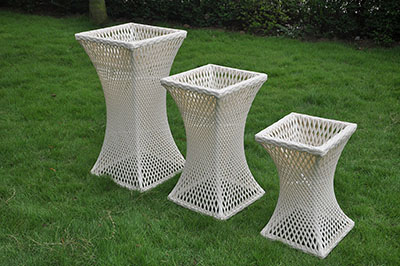Inhibition of RNA polymerase can extend life!
Guide A study led by UCL at University College London found that the lifespan of Drosophila and C. elegans can be extended by limiting the activity of an enzyme that is prevalent in animals. Related research was published online on November 29th. This article reveals that the survival of yeast cells, the lifespan of Drosophila and C. elegans can extend the activity of RNA polymerase III (Pol III) by an average of 10% in adulthood. First author Danny Filer said: "We have discovered a fundamental role for Pol III in adult fruit flies and nematodes: its activity has a negative impact on stem cell function, intestinal health and animal survival. When we suppress it All of these conditions can be improved by activity. Pol III has the same structure and function in different species, and we believe its role in mammals and humans is worth studying because it may lead to important therapies based on the results of the study." PolIII is widely found in animal cells Pol III is present in cells of all animal species, including humans. Three different RNA polymerases transcribe different classes of genes in the nucleus of eukaryotic cells. RNA polymerase III is an evolutionarily conserved enzyme that produces short non-coding RNA, tRNA and 5S rRNA. Although it is considered to be necessary for cell growth, it has not been found to be involved in aging until now. The team used a range of genetic methods, including insertional mutations, RNA interference, etc. to inhibit the activity of Pol III in adulthood and prolonged life expectancy. Yeast, fruit flies and nematodes are used as model organisms, although they are not closely related, but all contain Pol III. Target of rapamycin regulates PolIII activity The inhibition of the PolIII effect was found to be similar to that of the immunosuppressive drug rapamycin, which has been shown to prolong the lifespan of mice and other animals. The target of rapamycin complex 1 (TORC1) modulates the activity of Pol III. This discovery will help scientists understand the mechanism of action of drugs, such as rapamycin, which exhibits longevity in mammals. Dr. Nazif Alic, co-author of the study, explained: “There are a lot of hype surrounding drugs that can prolong life and promote healthy aging, and few people know how they work.†He also pointed out: "We now believe that Pol III can respond to signals that inhibit rapamycin, promote growth and accelerate aging. And inhibition of Pol III is enough to make fruit flies live longer, just like injecting them with thunder Like Papamycin. If we can understand this mechanism and go deeper into a wider range of species, we can develop targeted anti-aging therapies." Inhibition of Pol III only in the intestinal tract is sufficient to prolong life Inhibition of Pol III in the intestinal tract of Drosophila and C. elegans is sufficient to extend lifespan. When Pol III is inhibited only in the intestinal stem cells of Drosophila, they can live longer. Longevity is associated with an increase in age-related changes in intestinal pathology and function, inhibition of protein synthesis, and increased tolerance to protein balance stress. Limiting the activity of Pol III in the intestine can achieve longevity benefits of inhibiting systemic TORC1. Therefore, Pol III is a key mediator of the longevity signaling network. The anabolically active Pol III mediates the phenomenon of accelerated aging. The evolutionary conservation of Pol III affirms its potential as a therapeutic target. Another author, Dr. Jennifer Tullet, said: "This is amazing because we can make a genetic adjustment that has a positive impact on longevity and intestinal health, understand the potential molecules that work, and provide new strategies for anti-aging treatment." The team now plans to continue their research on Pol III to understand its role in adult organisms, revealing how its reduction in activity extends lifespan. Shanghai Chuangsai Technology has excellent performance, interleukin cytokines, fetal bovine serum, electrophoresis equipment scientific instruments, raw material drug standards, chemical reagents, cell culture consumables, Shanghai Chuangsai, mass products special promotions, welcome to inquire!
Rattan
Flower pot
is suit for outdoor garden usage for long time. The material is UV resistant PE
rattan and 1.2mm thickness aluminum frame with powder-coated.
Outstanding weaving and structural integrity make our rattan flower pot a welcome addition outdoors. Rattan fibers are smoothly double woven around concealed
powder-coated aluminum frames. Gently angled backs and
wide arms encourage restful lounging.
·
Traditional forms with a spacious, inviting scale
·
Handwoven premium resin wicker UV resistant
·
Rust-resistant powder-coated frames
·
Different size and design for your selection
·
Accept OEM, ODE design, factory price
We
have different design rattan flower pot, different size for your selection, you
can decorate your home or garden, make your life clean and neat.
If
you have any questions, please contact with us directly. Rattan Flower Pot are
produced by Golden Eagle Outdoor Furniture With High Quality and Good
Appearance. Welcome you can visit our Factory.For any inquiry,Please send mail
directly to us.
Rattan Flower Pot,Outdoor Rattan Flower Pot,Garden Rattan Flower Pot,Patio Rattan Flower Pot,Poly Rattan Furniture Golden Eagle Outdoor Furniture Co., LTD. , https://www.geoutdoorfurniture.com

